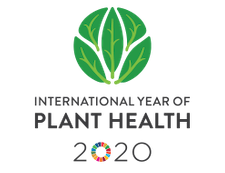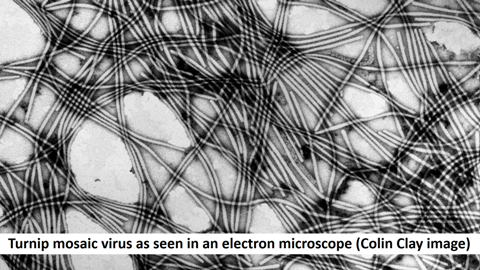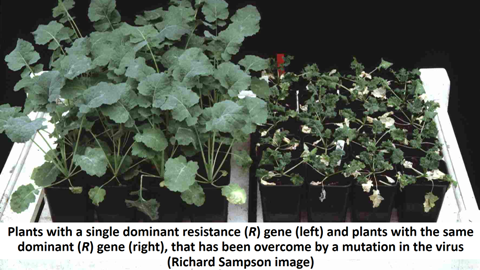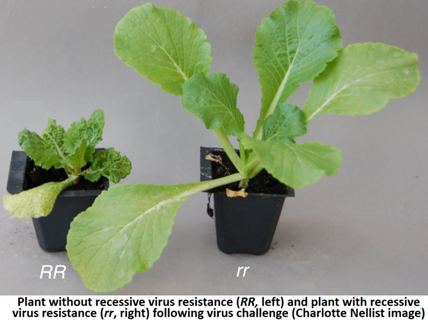A new generation of plant disease resistances
| The Food and Agriculture Organisation (FAO) of the United Nations have declared 2020 as the International Year of Plant HealthLink opens in a new window (IYPH) and have called for organisations to raise global awareness on how protecting plant health can help end hunger, reduce poverty, protect the environment, and boost economic development. Much of the research in the School of Life Sciences is aimed at improving crop productivity and combating pests and diseases while conserving the environment in order to feed an increasing population. In this series of articles we highlight just some of the work related to IYPH2020. |

|
Plants and pathogens
Plants are in a constant battle against the different pathogens that attack them. Scientists and plant breeders have focussed much of their effort and resources on identifying single dominant (R) genes to provide resistance against plant pathogens.
Unfortunately, most R genes have a short lifespan in that they are only effective against a narrow spectrum of strains of the pathogens they target and the pathogens can rapidly mutate to overcome the resistances.
Plant viruses
Plant viruses can have a profound impact on global agriculture, causing major losses in a broad range of crops.
They come in all shapes and small sizes and whilst they are often considered of tertiary importance behind fungal and bacterial pathogens, the true scope of the damage and losses they cause to food production and quality is very significant. Losses are often greatly underestimated; unlike fungal and bacterial pathogens, plant viruses cannot be seen, even under the microscope and they do not always cause obvious symptoms in plants.

Our research is aimed at identifying useful sources of natural plant resistance to viruses in order to reduce the use of pesticides and provide food security.
We have identified extreme sources of resistance to plant viruses controlled by dominant R genes, however, we found that a single base change in the genetic code of the virus was enough for the virus to overcome the resistance and hence the resistances would not be durable.

Viruses cannot reproduce outside of living cells and are dependent on the hosts’ cellular machinery to reproduce and complete their life cycles.
If the key components of the host plants’ cellular machinery that viruses depend on can be identified, these can be targeted for modification or deletion, in order to generate a new generation of disease resistances.
The new generation of plant disease resistances
As always, nature is one step ahead of we scientists. Often the key components of plants’ cellular machinery that viruses depend on is essential for the plants’ survival, hence modifying, or deleting such factors could be lethal to plants. However, many plant species have large genomes (in some cases much larger than the human genome) and possess multiple copies of essential genes.

We have identified plant lines where the key gene a particular plant virus depends on has been altered in such a way the virus cannot complete its life cycle. There is no indication that this alteration has any deleterious effect on the plant itself, probably because the plant has four other copies of this gene, none of which the virus can use. We identified the recessive plant gene (r) that had been modified and discovered how this affected the protein it coded for.
The resistance is very broad spectrum and none of the virus isolates from our collection of over 300 has been able to overcome the resistance, indicating that the resistance will be durable. The resistance gene is currently being incorporated in to commercial plant varieties by one of the world’s major plant breeding companies. Our identification of the resistance gene has dramatically accelerated their breeding process.
